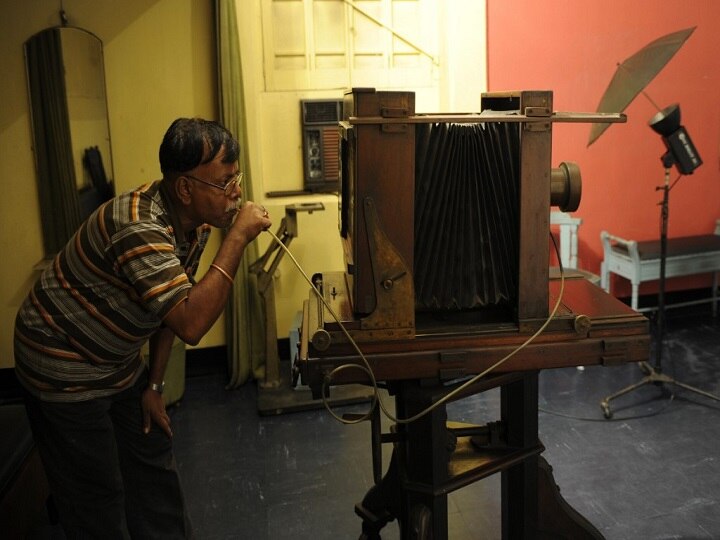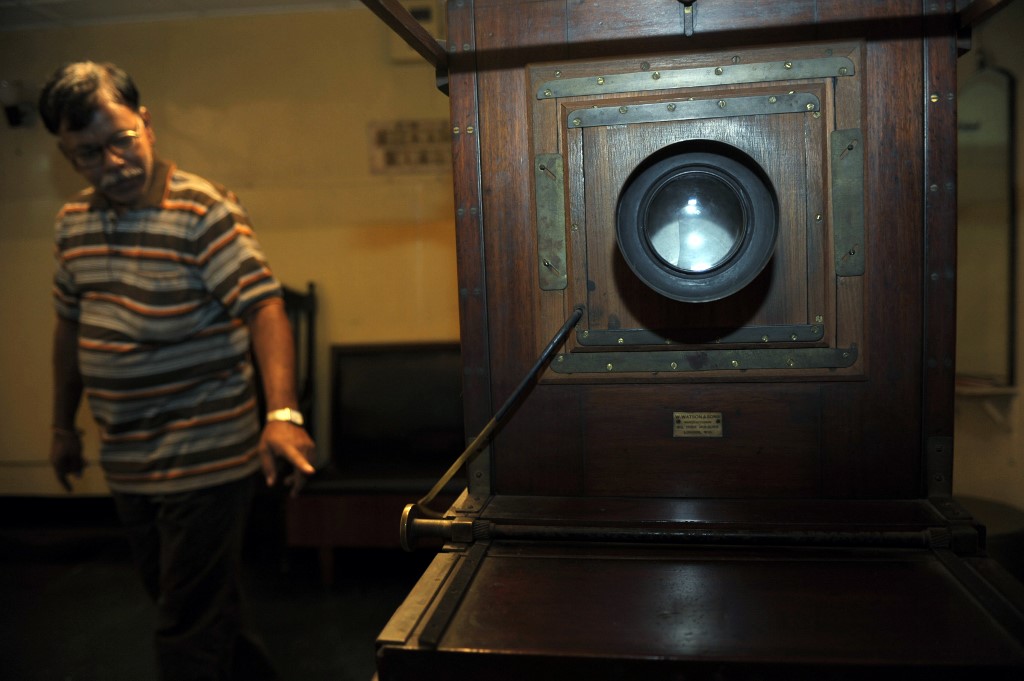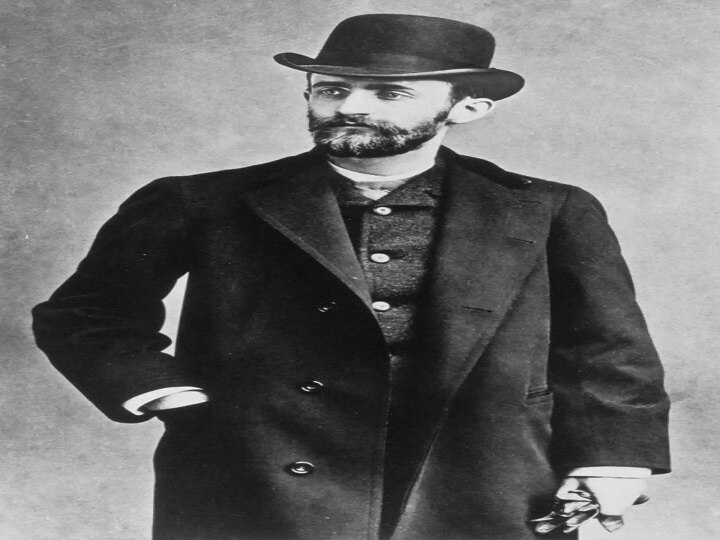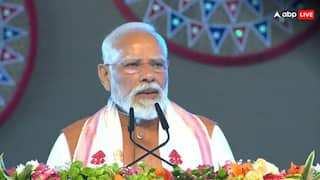Explorer
World Photography Day 2020: Know About The First Photo, History, Significance Of The Day
A frenchman Nicephore Niepce managed to produce the earliest surviving camera photograph in 1826 that represented a view from a window at his hometown in France.

Employee Arun Kunduof blows into the shutter release cable of a century-old wet plate camera as he does maintenance at the Bourne & Shepherd photo studio in Kolkata on World Photography Day August 19, 2010. The camera was used by legendary photographer Samuel Bourne and is an attraction here at one of the world's oldest surviving photographic studio, established in 1863. (FILE PIC/AFP)
World Photography Day 2020: “We are making photographs to understand what our lives mean to us,” once said Ralph Hattersley. This profound quote has a deep meaning as the world is celebrating World Photography Day. Today the world marks the celebration of the science, history, art and craft of photography. Those passionate about photography and art connoisseurs try raising awareness and share their creativity in the field of photography. Also Read: Go ‘Vocal For Local’ With These 5 Indian Alternatives For Popular Mobile Apps Photography has always raised curiosity for onlookers since 19th century when it was first discovered and to date, it remains inseparable from our lives. Thanks to the technology that allows us to capture rare moments and share it with the world. It is difficult to imagine a world without photography because everything around us has been encapsulated in the photograph be it science, advertisements, current media, events and more. Let’s check out the evolution, significance, and importance of the world photography day. The word ‘photography literally means "drawing with light". The words was first coined in 1839 by the British scientist Sir John Herschel from the Greek words phos (genetive: photos) means "light" and graphe means "drawing or writing". Did you know about the first photograph? Did you know that Napolean, who arrived on St Helena in 1816, was captured by a Frenchman, Nicephore Niepce? Nicephore Niepce tried capturing a small camera images on paper treated with silver chloride which is another chemical sensitive to light. However, he was unable to fix and preserve these images, hence, began experimenting with other light-sensitive substances. In 1822, Niepce invented a process and named it as "heliography" which is a Greek word meaning "sun drawing" from helios and graphe. He managed to produce the earliest surviving camera photograph in 1826/7. The photograph represented a view from a window at Le Gras (his hometown in Burgundy, France) captured on a pewter plate coated in bitumen diluted in lavender oil. The first colour photograph was taken by the mathematical physicist, James Clerk Maxwell.  A picture shows a plate signed by Louis Daguerre, a French artist and chemist, who invented the daguerreotype process of photography, on a very rare Alphonse Giroux "Daguerreotype" camera from 1839. FILE PIC/AFP.
A picture shows a plate signed by Louis Daguerre, a French artist and chemist, who invented the daguerreotype process of photography, on a very rare Alphonse Giroux "Daguerreotype" camera from 1839. FILE PIC/AFP.  Employee Arun Kunduof blows into the shutter release cable of a century-old wet plate camera as he does maintenance at the Bourne & Shepherd photo studio in Kolkata on World Photography Day August 19, 2010. The camera was used by legendary photographer Samuel Bourne and is an attraction here at one of the world's oldest surviving photographic studio, established in 1863. (FILE PIC/AFP)
Employee Arun Kunduof blows into the shutter release cable of a century-old wet plate camera as he does maintenance at the Bourne & Shepherd photo studio in Kolkata on World Photography Day August 19, 2010. The camera was used by legendary photographer Samuel Bourne and is an attraction here at one of the world's oldest surviving photographic studio, established in 1863. (FILE PIC/AFP)  Employee Arun Kunduof points at a century-old wet plate camera as he does maintenance at the Bourne & Shepherd photo studio in Kolkata on World Photography Day August 19, 2010. The camera was used by legendary photographer Samuel Bourne and is an attraction here at one of the world's oldest surviving photographic studio, established in 1863. AFP PHOTO/Deshakalyan CHOWDHURY (Photo by DESHAKALYAN CHOWDHURY / AFP) Who invented the photographic process? Daguerreotype, is basically a photographic process that was first developed by Frenchmen Louis Daguerre and Joseph Nicephore Niepce in 1837. Officially, the French Academy of Sciences recognised the Daguerreotype process in 1839. This was the initial success of offering a relatively inexpensive and accurate way of representing scenes and faces which previously had to be drawn or painted manually. Soon after, several photographic studios emerged across Paris and across the world.
Employee Arun Kunduof points at a century-old wet plate camera as he does maintenance at the Bourne & Shepherd photo studio in Kolkata on World Photography Day August 19, 2010. The camera was used by legendary photographer Samuel Bourne and is an attraction here at one of the world's oldest surviving photographic studio, established in 1863. AFP PHOTO/Deshakalyan CHOWDHURY (Photo by DESHAKALYAN CHOWDHURY / AFP) Who invented the photographic process? Daguerreotype, is basically a photographic process that was first developed by Frenchmen Louis Daguerre and Joseph Nicephore Niepce in 1837. Officially, the French Academy of Sciences recognised the Daguerreotype process in 1839. This was the initial success of offering a relatively inexpensive and accurate way of representing scenes and faces which previously had to be drawn or painted manually. Soon after, several photographic studios emerged across Paris and across the world.  www.kodak.com However, the first durable color photograph was taken in 1861 and the first digital photograph is being speculated to being invented in 1957, almost 20 years before Kodak's engineer invented the first digital camera. In 1880, George Eastman opened the Eastman Dry Plate and Film Company. His first camera, the Kodak, was sold in 1888.
www.kodak.com However, the first durable color photograph was taken in 1861 and the first digital photograph is being speculated to being invented in 1957, almost 20 years before Kodak's engineer invented the first digital camera. In 1880, George Eastman opened the Eastman Dry Plate and Film Company. His first camera, the Kodak, was sold in 1888.
 A picture shows a plate signed by Louis Daguerre, a French artist and chemist, who invented the daguerreotype process of photography, on a very rare Alphonse Giroux "Daguerreotype" camera from 1839. FILE PIC/AFP.
A picture shows a plate signed by Louis Daguerre, a French artist and chemist, who invented the daguerreotype process of photography, on a very rare Alphonse Giroux "Daguerreotype" camera from 1839. FILE PIC/AFP.  Employee Arun Kunduof blows into the shutter release cable of a century-old wet plate camera as he does maintenance at the Bourne & Shepherd photo studio in Kolkata on World Photography Day August 19, 2010. The camera was used by legendary photographer Samuel Bourne and is an attraction here at one of the world's oldest surviving photographic studio, established in 1863. (FILE PIC/AFP)
Employee Arun Kunduof blows into the shutter release cable of a century-old wet plate camera as he does maintenance at the Bourne & Shepherd photo studio in Kolkata on World Photography Day August 19, 2010. The camera was used by legendary photographer Samuel Bourne and is an attraction here at one of the world's oldest surviving photographic studio, established in 1863. (FILE PIC/AFP)  Employee Arun Kunduof points at a century-old wet plate camera as he does maintenance at the Bourne & Shepherd photo studio in Kolkata on World Photography Day August 19, 2010. The camera was used by legendary photographer Samuel Bourne and is an attraction here at one of the world's oldest surviving photographic studio, established in 1863. AFP PHOTO/Deshakalyan CHOWDHURY (Photo by DESHAKALYAN CHOWDHURY / AFP) Who invented the photographic process? Daguerreotype, is basically a photographic process that was first developed by Frenchmen Louis Daguerre and Joseph Nicephore Niepce in 1837. Officially, the French Academy of Sciences recognised the Daguerreotype process in 1839. This was the initial success of offering a relatively inexpensive and accurate way of representing scenes and faces which previously had to be drawn or painted manually. Soon after, several photographic studios emerged across Paris and across the world.
Employee Arun Kunduof points at a century-old wet plate camera as he does maintenance at the Bourne & Shepherd photo studio in Kolkata on World Photography Day August 19, 2010. The camera was used by legendary photographer Samuel Bourne and is an attraction here at one of the world's oldest surviving photographic studio, established in 1863. AFP PHOTO/Deshakalyan CHOWDHURY (Photo by DESHAKALYAN CHOWDHURY / AFP) Who invented the photographic process? Daguerreotype, is basically a photographic process that was first developed by Frenchmen Louis Daguerre and Joseph Nicephore Niepce in 1837. Officially, the French Academy of Sciences recognised the Daguerreotype process in 1839. This was the initial success of offering a relatively inexpensive and accurate way of representing scenes and faces which previously had to be drawn or painted manually. Soon after, several photographic studios emerged across Paris and across the world.  www.kodak.com However, the first durable color photograph was taken in 1861 and the first digital photograph is being speculated to being invented in 1957, almost 20 years before Kodak's engineer invented the first digital camera. In 1880, George Eastman opened the Eastman Dry Plate and Film Company. His first camera, the Kodak, was sold in 1888.
www.kodak.com However, the first durable color photograph was taken in 1861 and the first digital photograph is being speculated to being invented in 1957, almost 20 years before Kodak's engineer invented the first digital camera. In 1880, George Eastman opened the Eastman Dry Plate and Film Company. His first camera, the Kodak, was sold in 1888. Follow Breaking News on ABP Live for more latest stories and trending topics. Watch breaking news and top headlines online on ABP News LIVE TV
Read more

Sayantan Ghosh
Opinion





































